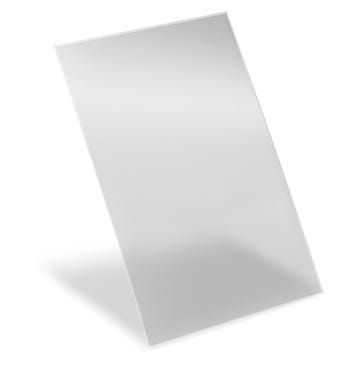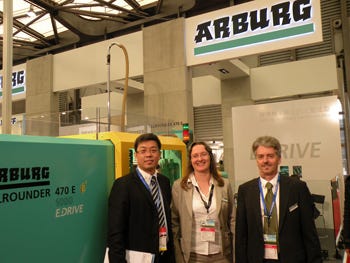Chinaplas 2012: Arburg sees bright future in Asia for light-guide panel molding
Targeting the red-hot tablet market in the region of the world where most are currently made, Arburg showcased an injection molding technology at Chinaplas that can efficiently produce light-guide panels for TFT screens, despite the component's challenging geometry. Applied in everything from notebooks to iPads to LED screens, the light-guide panels are utilized to "guide light" through the screen so that it is even throughout.
May 14, 2012
Targeting the red-hot tablet market in the region of the world where most are currently made, Arburg showcased an injection molding technology at Chinaplas that can efficiently produce light-guide panels for TFT screens, despite the component's challenging geometry. Applied in everything from notebooks to iPads to LED screens, the light-guide panels are utilized to "guide light" through the screen so that it is even throughout.
light-guide panel |
Light-guide panels (above) represent a market Arburg is pursuing in Asia. Below, Zhao Tong, managing director of Arburg's Shanghai subsidiary; Dr. Bettina Keck, corporate communications at Arburg; and Hans-Günter Zimmermann, Arburg's senior sales manager Asia/Africa at the company's Chinaplas 2012 stand. |
Arburg Chinaplas 2012 |
Arburg used an Allrounder 630 S, with a clamping force of 2500 kN and a 2-cavity mold to create the panel. With a thickness of only 0.5 mm and a length of 10 inches, the parts have a flow/path wall thickness ratio of 350:1. Hans-Günter Zimmermann, senior sales manager Asia/Africa, said the technology, which utilizes a special polycarbonate, was originally introduced for smaller items, like smart phones, but advances are allowing it to move into larger screens. Produced in a cycle time of approximately 15 seconds, the side-gated light-guide panels are made in a two-stage process combining injection and compression molding.
In this process, the mold only closes completely once the melt is already in the cavity so that a uniform pressure is applied to the cavity surface of the shrinking component. This creates a constant level of pressure within the cavity throughout molding. Arburg noted that compression injection molding allows greater flow path/wall thickness ratios to be achieved, while shrinkage and deformation effects can be reduced.
Zimmermann said Chinaplas 2012 marks the first time Arburg has displayed the technology, with the system on its stand already sold, and plans to bring another one to Taiwan's plastics show this September, Taipei Plas.
A shift to higher technology
Zimmermann noted that Arburg has seen a shift in its China business, both in terms of customers and technology. "The Chinese people are discovering that it's worthwhile to invest in high quality machines," Zimmermann said, adding that eight years ago, the company derived 80% of its China sales from international companies manufacturing in China, with the remaining 20% coming from Chinese clients. Today, those numbers are reversed. "China represents a very important market," Zimmermann said, "and [Arburg] is growing quickly here."
The German company's history in China dates back to the 1980s, when it delivered machines to Hong Kong with a trading partner. In 1991, it opened a subsidiary in Hong Kong, and six years later in 1997, it opened an office in Shanghai. In 2006, the company opened another office in Shenzhen, with spare parts, service, training and sales. At this point in time, it has around 30 full-time employees in China.
About the Author(s)
You May Also Like




